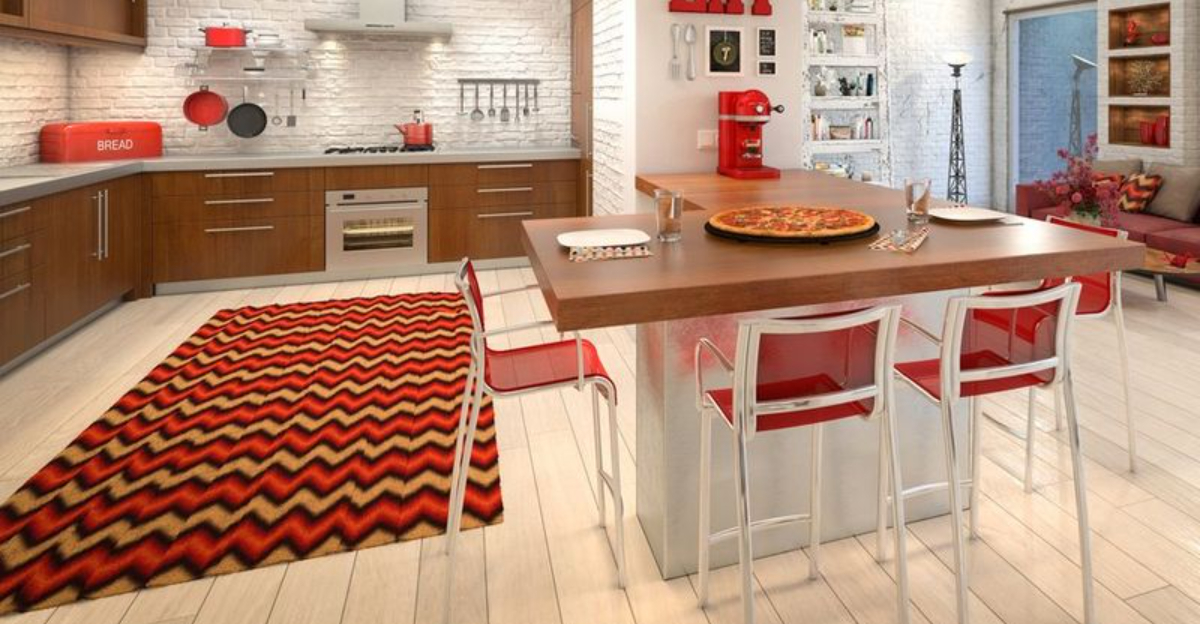Kitchen floors take a beating from spills, foot traffic, and dropped utensils, yet somehow outdated and impractical options keep finding their way into homes.
Some flooring choices simply aged poorly after their heyday, while others were doomed from conception. Ready for a reality check on what belongs beneath your feet when cooking? Here’s your no-holds-barred guide to kitchen flooring failures.
1. Glossy Cherry Laminate
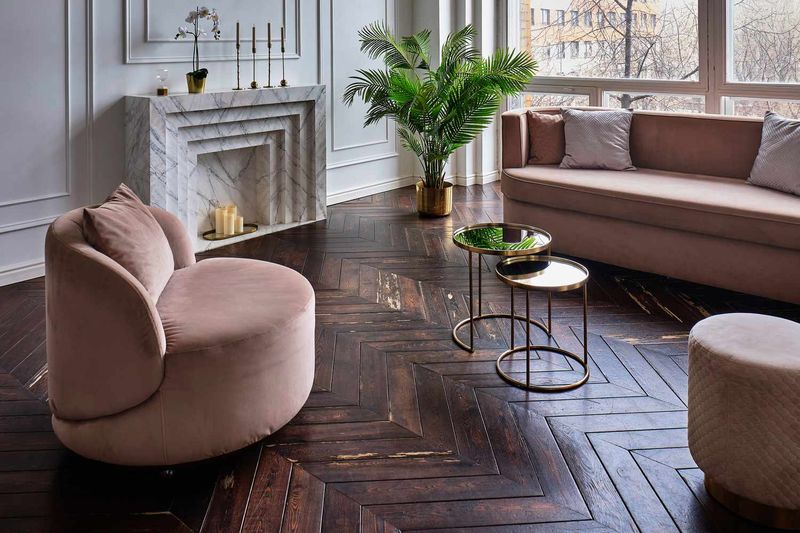
Remember when every new build featured reddish-brown floors shinier than a bowling alley? Scratch-prone and screaming ‘2005 McMansion,’ glossy cherry laminate now looks as dated as flip phones.
Modern kitchens demand subtler, matte finishes that don’t reflect every ceiling light and fingerprint. Once the crown jewel of developer-grade homes, cherry laminate now signals ‘renovation needed’ on real estate listings.
2. Faux-Distressed Everything

Manufactured wear marks scream ‘trying too hard’ in kitchen flooring. Factory-scraped gouges and artificial time-worn patina look uniformly fake—like wearing pre-ripped jeans to a fancy dinner.
Authentic patina develops naturally over decades. Paying premium prices for engineered imperfections creates a weirdly consistent ‘randomness’ pattern repeating across your floor. Real character comes from real living, not assembly-line distressing techniques.
3. Gray-Washed Everything
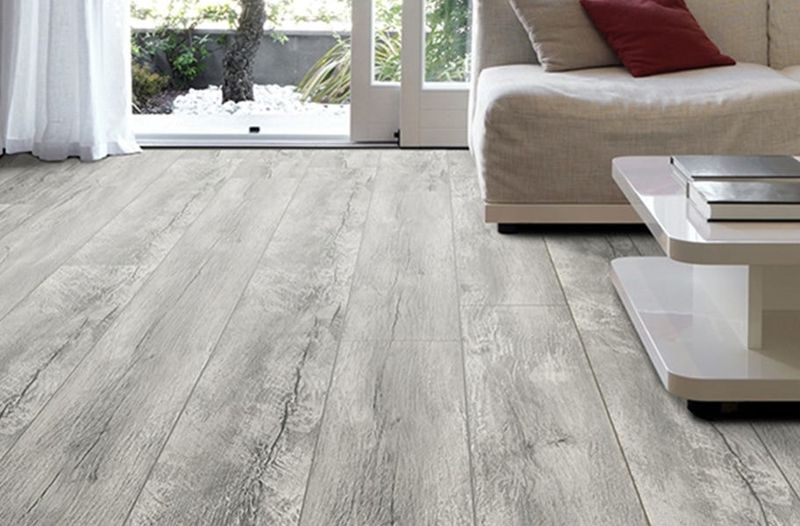
Gray flooring reached peak saturation around 2018, becoming the design equivalent of a one-hit wonder played on endless repeat. Cool-toned gray plank floors now read as ‘mass-market flip house special.’
Kitchens need warmth and dimension. Monochromatic gray creates a clinical atmosphere that clashes with food preparation spaces. Buyers increasingly view gray flooring as a trendy misstep requiring replacement, not a neutral foundation for design.
4. Busy Moroccan Cement Tile
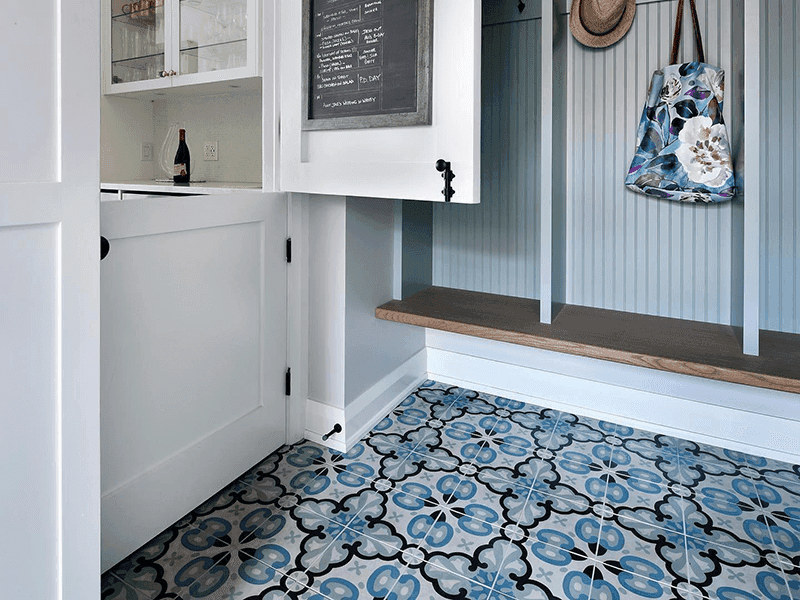
Bold geometric patterns once dominated Instagram kitchen renovations. Now they’re visual noise machines that make small kitchens feel claustrophobic and chaotic.
Pattern fatigue sets in quickly when you’re standing on a busy design daily. Maintenance nightmares follow as grout lines collect grime in high-traffic areas. What seemed charming during installation becomes an eye-crossing, headache-inducing commitment you’ll regret halfway through your morning coffee routine.
5. Fake Barn Wood Planks
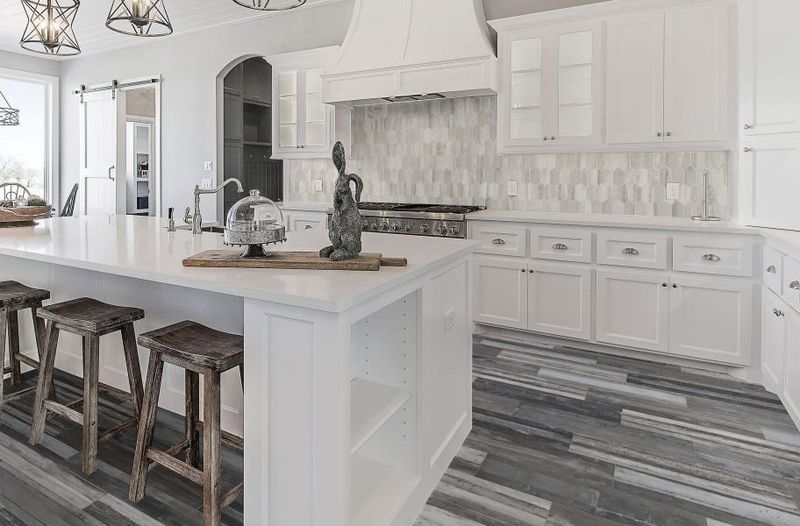
Rustic farmhouse floors peaked alongside shiplap walls and ‘Live Laugh Love’ signs. Synthetic barn wood planks in suburban homes create a jarring authenticity gap – like cowboy boots at a swimming pool.
Kitchen floors should reflect your actual lifestyle, not a romanticized rural fantasy. Faux-rustic flooring in new
construction creates a puzzling architectural identity crisis. Especially egregious: barn wood floors paired with sleek contemporary cabinetry and stainless appliances.
6. Skinny Strip Hardwood
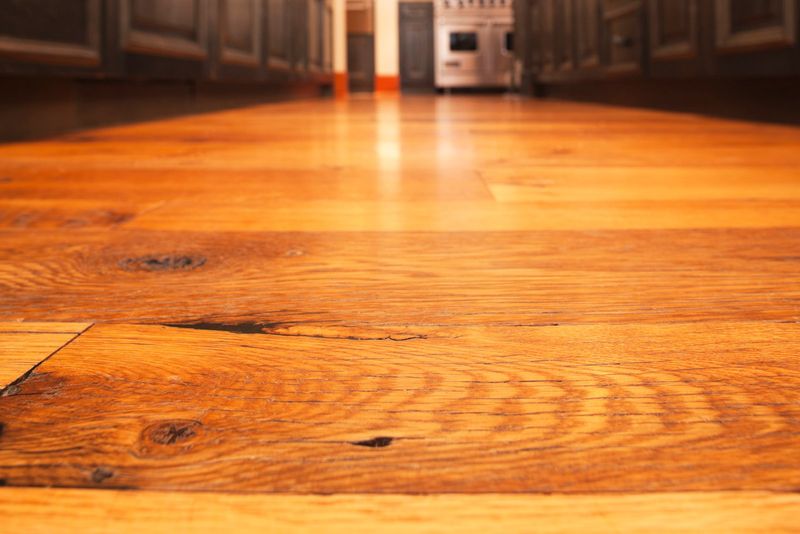
Narrow 2-inch planks chop visual flow into distracting segments. Every thin strip creates another visual break, making modest kitchens feel fragmented and busy with hundreds of unnecessary seam lines.
Flooring should provide foundation, not dominate attention. Skinny strips deliver dated 1990s condo vibes while demanding more installation labor and materials. Wide planks (5-7 inches) create cleaner sightlines and more contemporary proportions without the dizzying effect of excessive wood strips.
7. Budget Peel-and-Stick Vinyl
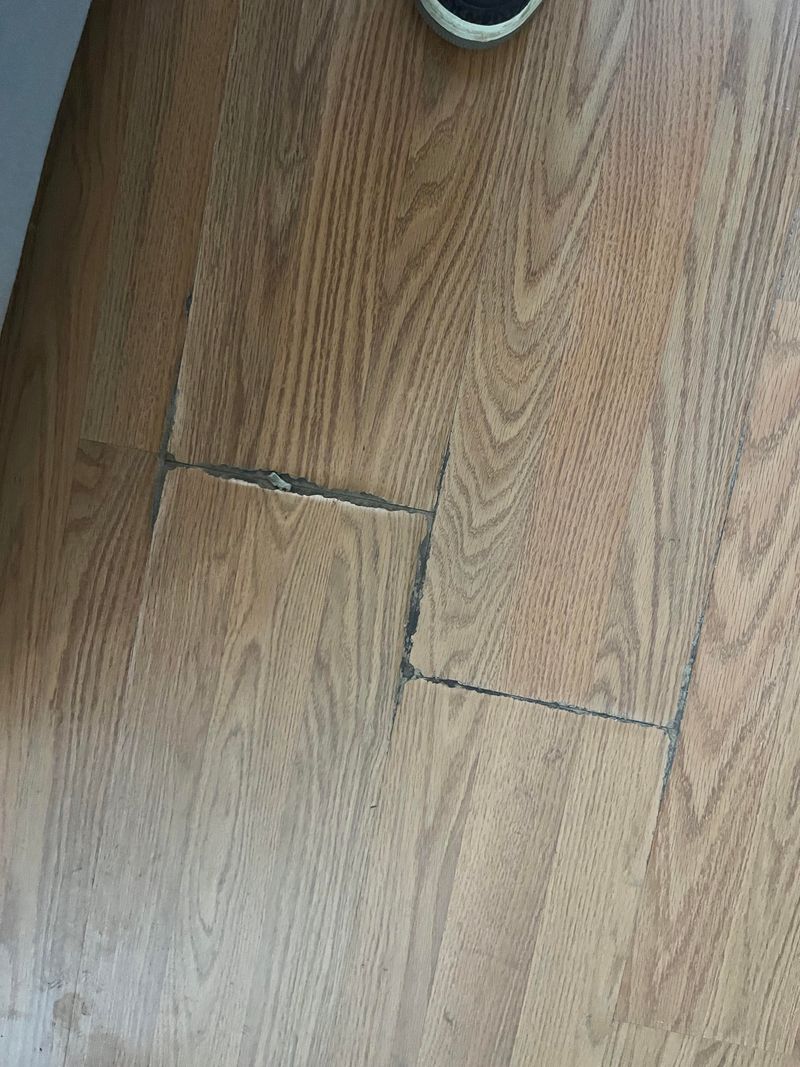
Curling edges and visible seams announce ‘temporary solution’ faster than any other flooring option. Bargain adhesive tiles might seem smart initially but quickly transform into a patchwork of peeling corners and trapped moisture.
Kitchen floors need durability above all else. Cheap vinyl tiles lift after steam mopping, creating trip hazards and bacterial breeding grounds. Corners brown from spilled liquids seeping underneath, while shifting subfloors create embarrassing gaps between tiles within months.
8. Orange-Toned Oak Planks
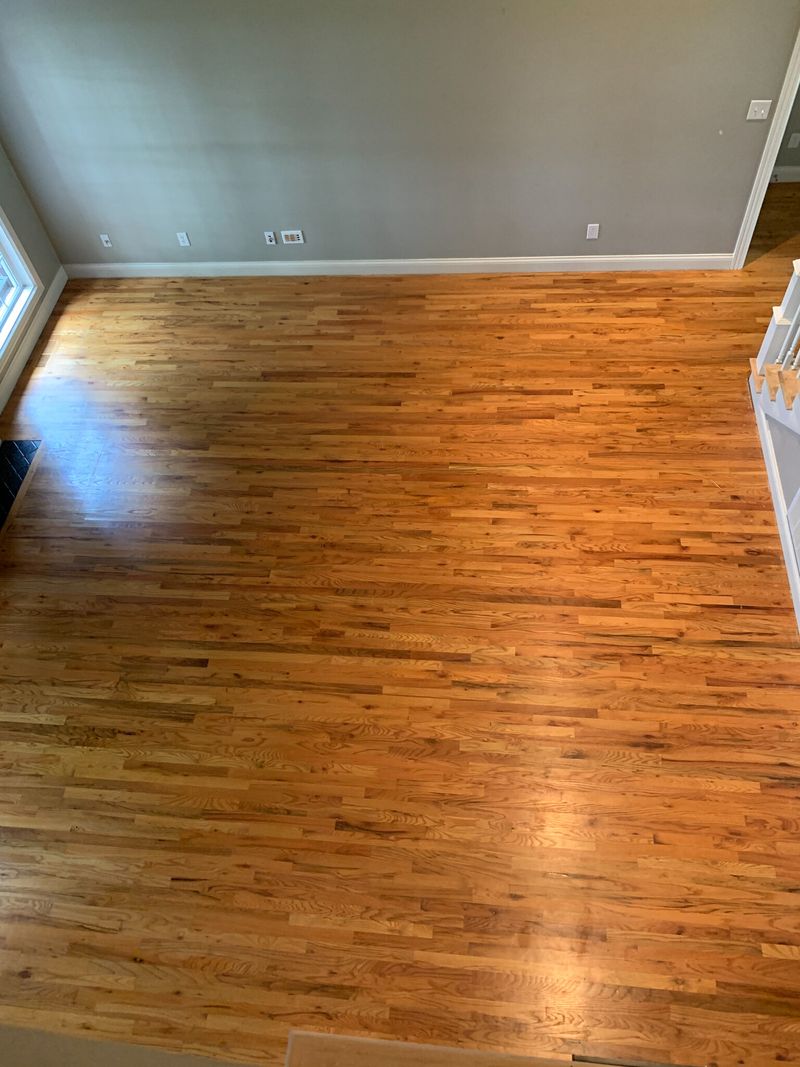
Honey-amber oak flooring radiates unmistakable 1990s energy – like walking on a sea of pumpkin spice. Overly warm orange undertones clash spectacularly with nearly every modern cabinet color and countertop material.
Kitchen design needs balanced temperature. Orange-toned floors fight visually with cool stainless appliances and most paint colors. Even white cabinets take on a sickly yellow cast when reflected against orange-hued floors. Natural oak can work beautifully, but not when stained to resemble traffic cones.
9. Obvious Vinyl Plank Seams
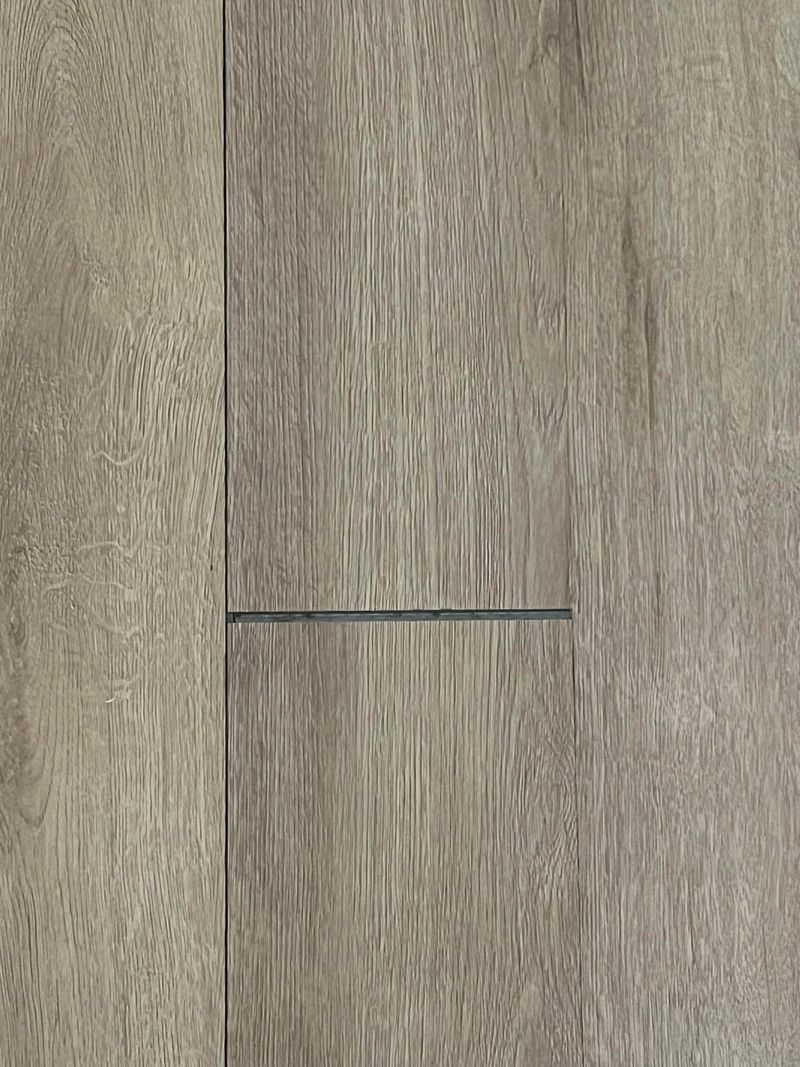
Vinyl planks promised wood-look convenience without woodcare hassles. Reality delivered obvious plastic seams that collect dirt and broadcast “budget renovation” to everyone who enters.
Kitchen floors endure intense scrutiny during gatherings. Low-quality vinyl with visible edge gaps and height mismatches between planks creates an unmistakably artificial appearance. Premium LVP exists, but bargain versions with poor locking mechanisms create embarrassing lippage that catches both eyes and mop strings.
10. Beige Square Tiles with Matching Grout
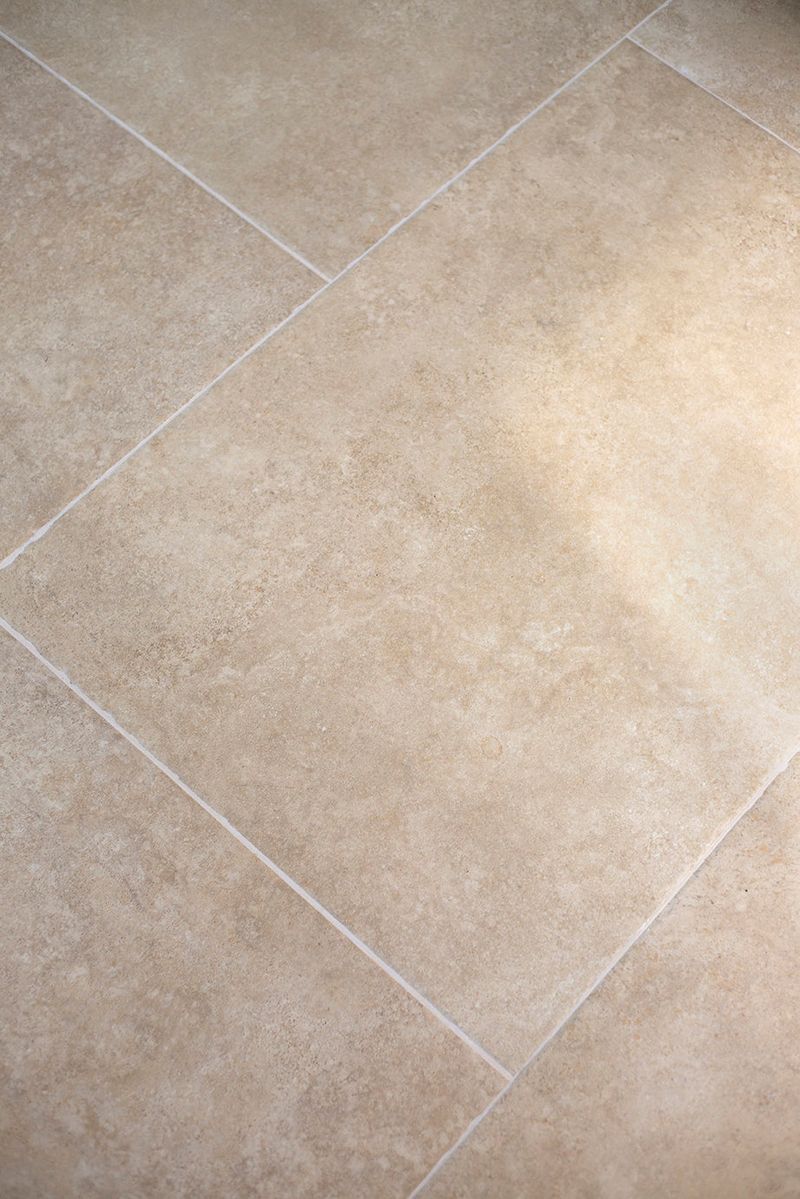
Builder-grade beige 12×12 ceramic tiles with matching grout create the visual equivalent of elevator music – safe, forgettable, and utterly devoid of personality. Uniform beige expanses make kitchens feel like public restrooms.
Monochromatic beige tile installations disappear into boring sameness, lacking definition or visual interest. Matching grout compounds the problem by eliminating pattern definition. Even budget-friendly options can show more imagination than this 1997 apartment special.
11. Kitchen Carpet (Yes, Really)
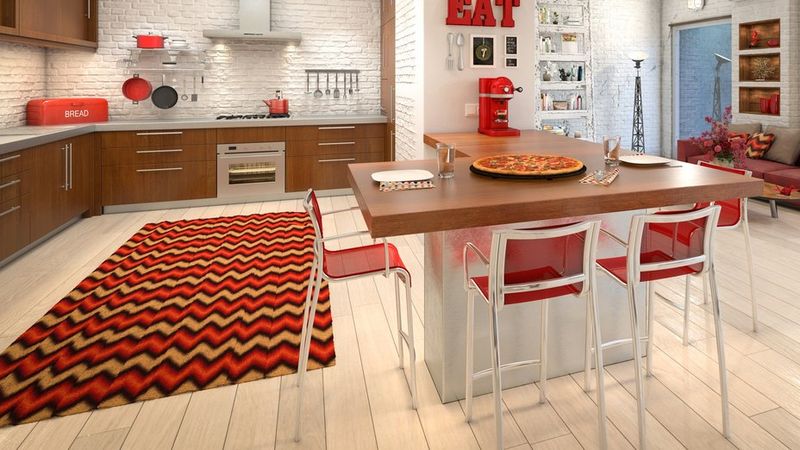
Whoever decided fabric belonged under refrigerators never cooked spaghetti sauce or owned a pet. Kitchen carpet collects food particles, absorbs spills, and harbors bacterial colonies beneath its fibers.
Carpet traps cooking odors permanently while providing the perfect environment for mold growth. Beyond hygiene horrors, pushing heavy appliances across carpet creates permanent compression marks and tears. No amount of scotchgard can redeem this fundamentally flawed concept.
12. Indoor Artificial Turf

Artificial grass belongs on mini-golf courses, not beneath your breakfast nook. Fake turf creates bizarre texture transitions while collecting crumbs in its plastic blades with demonic efficiency.
Synthetic grass fibers trap food particles while resisting normal cleaning methods. Vacuum cleaners struggle with the dense material, and mopping creates soggy, slow-drying patches. Beyond cleaning nightmares, artificial turf delivers uncomfortable footing that feels fundamentally wrong indoors.
13. Neon Epoxy Resin Floors
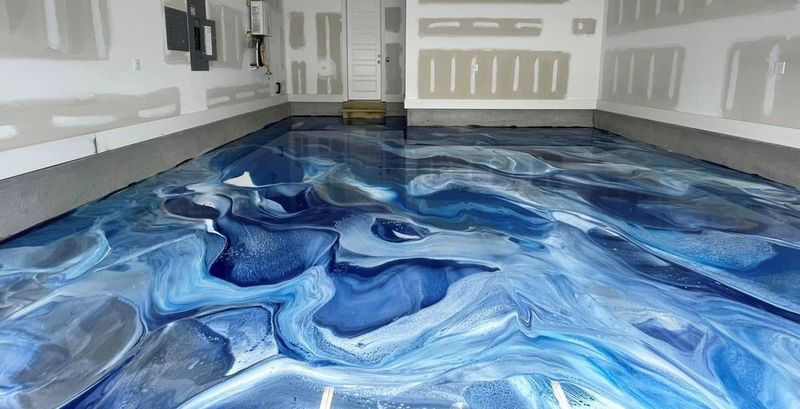
Metallic epoxy in electric blues and acid greens transforms kitchens into nightclub bathrooms. Swirling neon colors create visual chaos that fights with everything from cabinet finishes to breakfast cereal boxes.
Screaming-loud floors make the entire room feel unstable and dizzying. Beyond questionable aesthetics, epoxy adheres poorly to many subfloors, leading to chips and cracks. When the inevitable trend correction comes, removal requires intensive labor and specialized equipment.
14. Hand-Painted Stenciled Linoleum
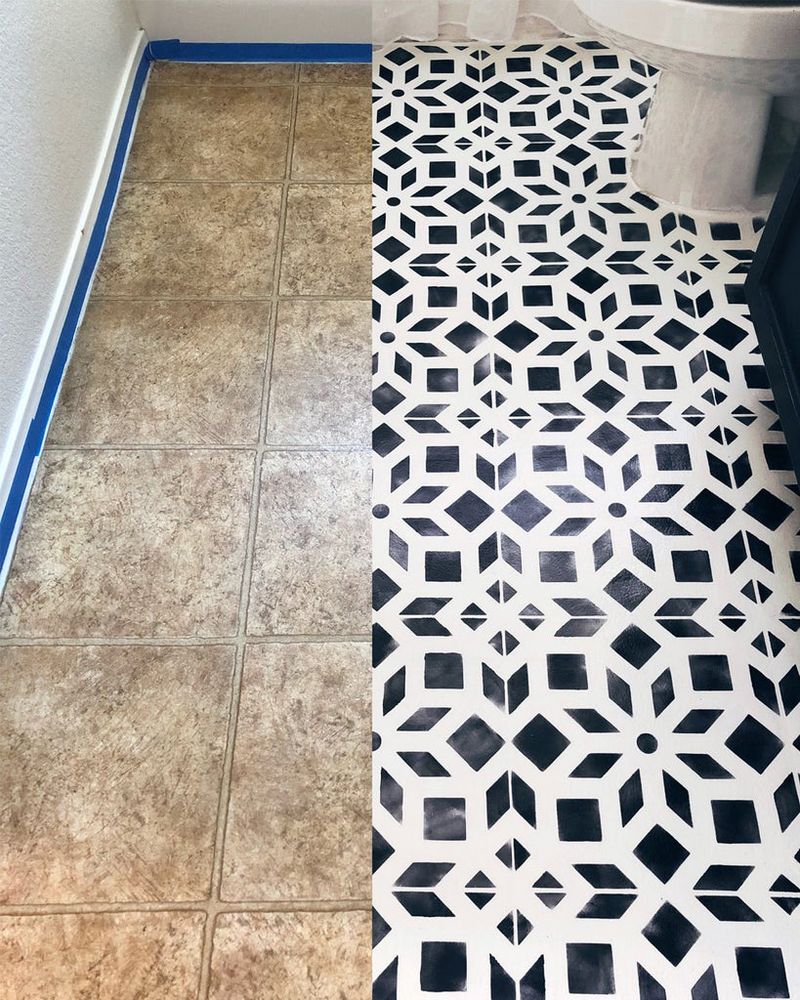
DIY stencil projects rarely survive contact with reality. Hand-painted linoleum floors chip and scuff within weeks, revealing sad, patchy patterns and uneven paint application under kitchen traffic.
Floors need industrial-grade durability.
Consumer paint products can’t withstand chair legs, dropped utensils, or regular mopping. Beyond rapid deterioration, stenciled patterns date themselves instantly through their trendy motifs. No amount of protective polyurethane can prevent the inevitable worn paths that develop through high-traffic areas.
15. Click-Lock Laminate in Wet Zones
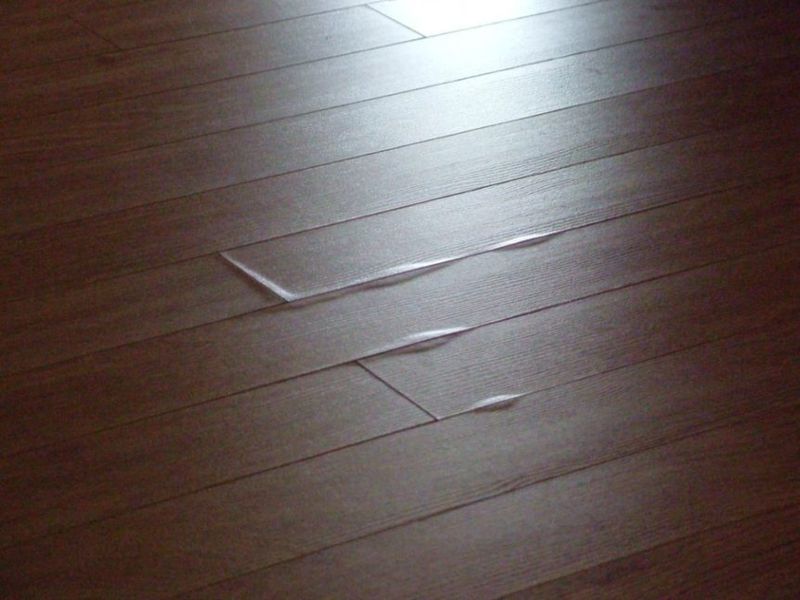
Budget laminate near sinks and dishwashers creates ticking time bombs of swollen edges and warped planks. Water inevitably finds seams, causing catastrophic failure that spreads across connected boards.
Standard laminate products disintegrate when water penetrates their fiberboard cores. Even minor leaks cause irreparable damage as edges curl and surfaces bubble.
Particularly problematic: refrigerator ice makers and dishwashers with slow, undetected leaks that destroy subfloors before surface damage becomes visible.
16. Animal Print Vinyl Tiles

Zebra stripes and leopard spots belong in eccentric aunts’ living rooms, not serious kitchens. Wild animal patterns create visual exhaustion while clashing with essentially every cabinet style, countertop material, and appliance finish.
Novelty prints dominate attention, forcing all other elements into subordinate roles. Beyond aesthetics, busy patterns hide genuine dirt while showcasing every scratch. Especially problematic in resale situations where potential buyers must envision living with your safari fantasy floor.
17. River Rock Pebble Inlays
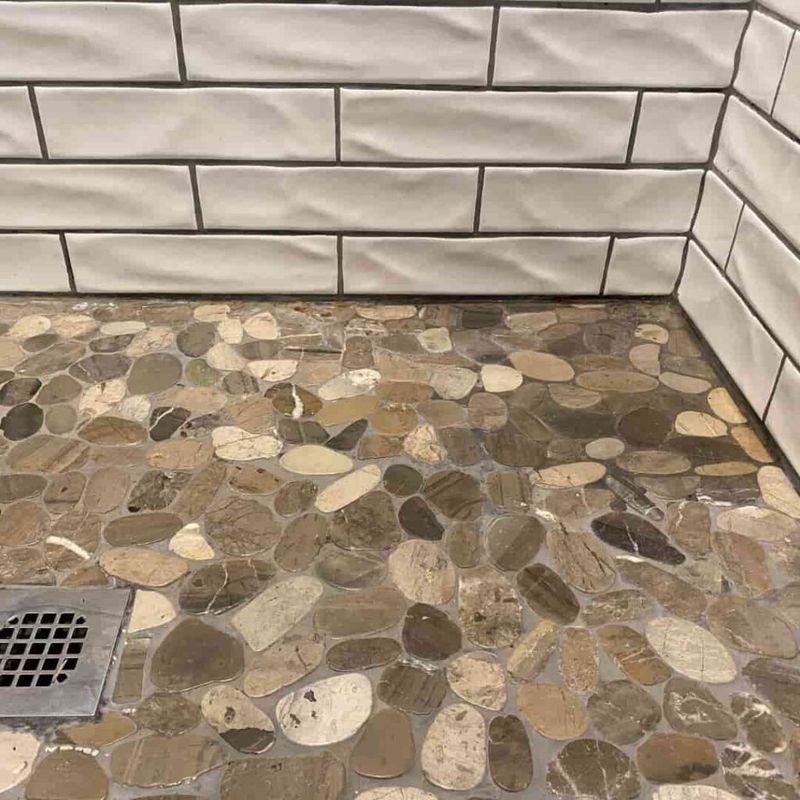
Embedding smooth stones in kitchen pathways creates uneven surfaces that challenge balance while collecting grime between each pebble. Walking on bumpy stone sections feels like a reflexology session nobody requested.
Protruding pebbles create cleaning nightmares as mops skip over recessed areas. Food particles lodge permanently between stones, creating hygiene issues. Particularly treacherous: transitioning from flat surfaces to pebbled sections while carrying hot pans or dishes.
18. Faux Brick Veneer Tiles
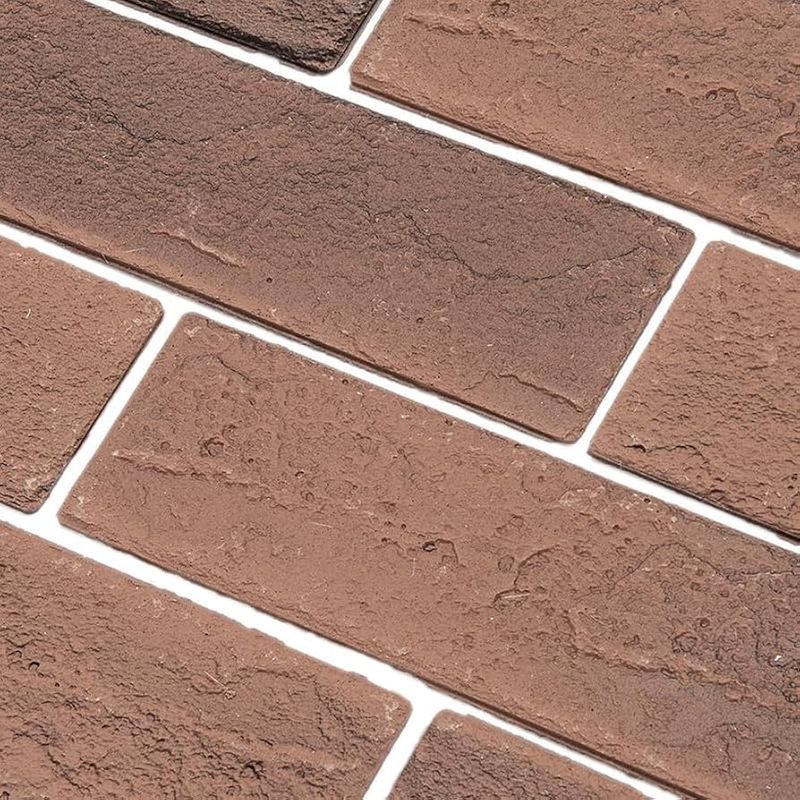
Thin brick-look tiles create medieval dungeon vibes while providing hundreds of grout lines to scrub. Each recessed joint becomes a permanent repository for flour, sugar, and whatever else spills during cooking.
Textured brick veneer creates maintenance nightmares with its intentionally uneven surface and excessive grout requirements. Beyond practical concerns, fake brick delivers strange architectural confusion when paired with typical kitchen finishes.
Especially puzzling when installed in contemporary homes with no other brick elements.
19. Glow-in-the-Dark Grout Lines
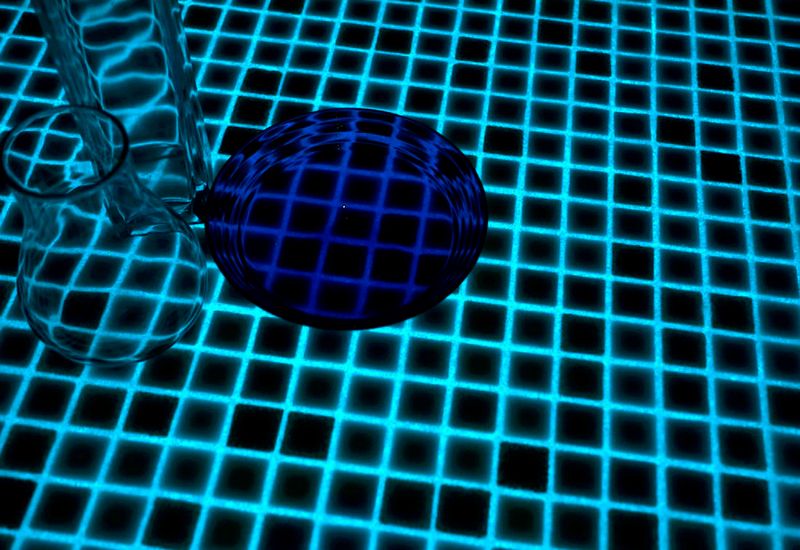
Phosphorescent grout creates eerie green pathways resembling airport runway lights. Midnight snack runs become science fiction experiences as glowing grid patterns illuminate your kitchen after dark.
Glow materials fade unevenly, creating patchy illumination that looks cheap rather than cool. Beyond questionable aesthetics, specialized grout often lacks the sealing capabilities of quality standard options. Particularly regrettable when the inevitable Instagram trend fades faster than the actual product.
20. Glass Tile Flooring
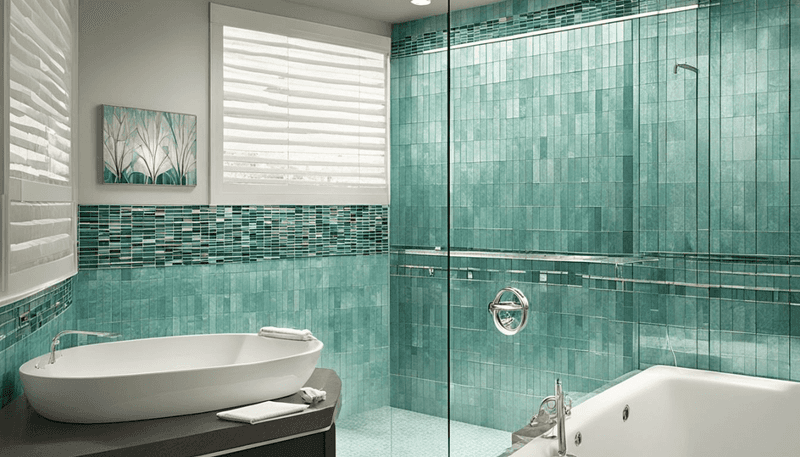
Walking on glass creates an unsettling sensation matched only by the squeaky sound it makes underfoot. Slippery when dry and downright treacherous when wet, glass tiles transform ordinary kitchen tasks into high-risk activities.
Glass surfaces become skating rinks when exposed to even minimal moisture. Beyond safety concerns, glass scratches visibly under chair legs and shows every footprint. Particularly problematic: the astronomical cost of this fundamentally flawed material that somehow manages to be both fragile and dangerous.

